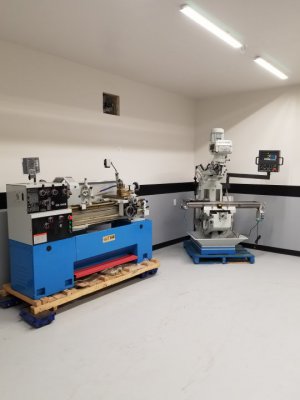- Joined
- May 14, 2013
- Messages
- 237
I have a New . not even new to me 9x49 bridgeport J head clone milling machine . I am attempting to tram the head, I have the Tram done in the "X" axis and it is holding. The three bolts run thru the ram and are threaded into the opposite side of the casting to hold the nod setting. I had it set up and trammed to within .0005" over 8" and mad a test cut it cut with a .007" bevel? Head lifted up... I had tightened the bolts just using a 19mm (3/4") combination wrench and it appears to not be enough to hold the adjustment, Perhaps I will try using a torque wrenck to verify the actual value ? I am lead to beleive the number is 50 foot lbs. Can anyone expand or enlighten me on the subject?


